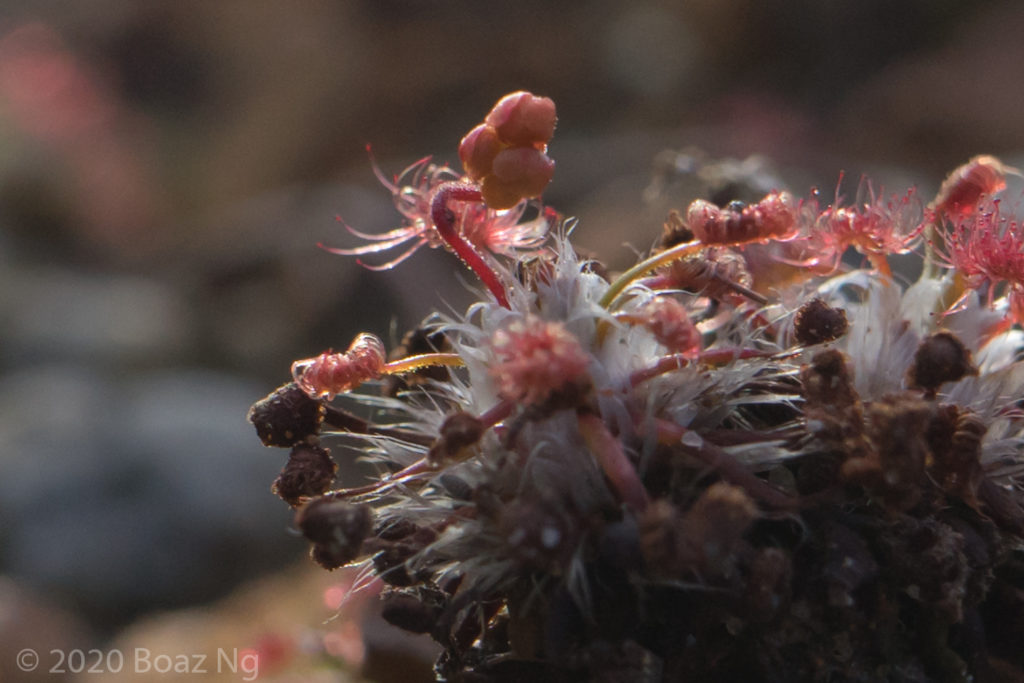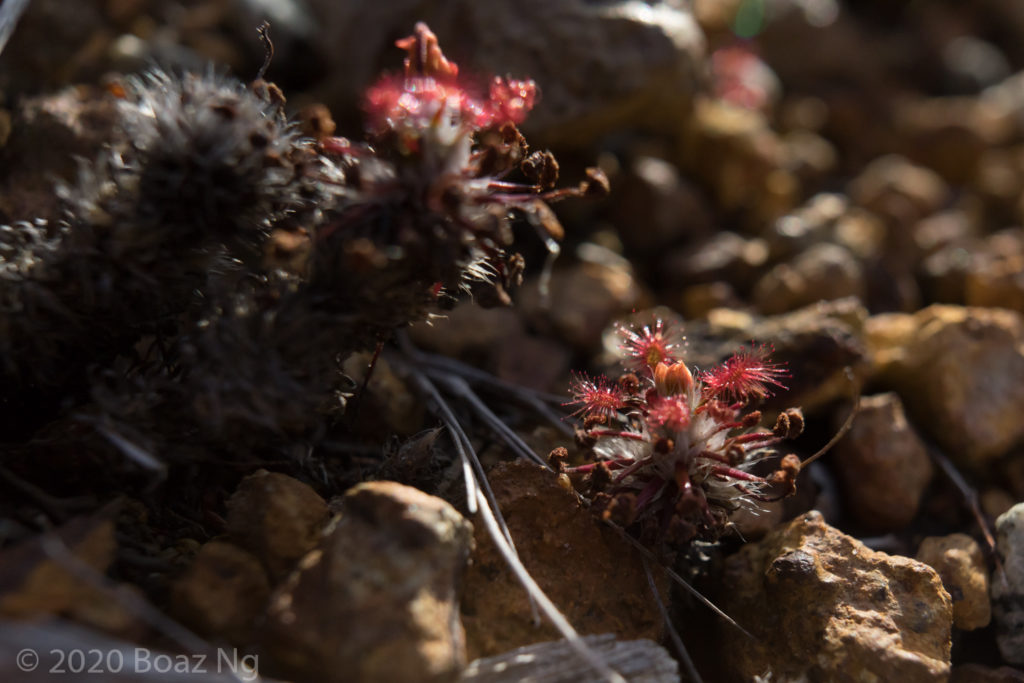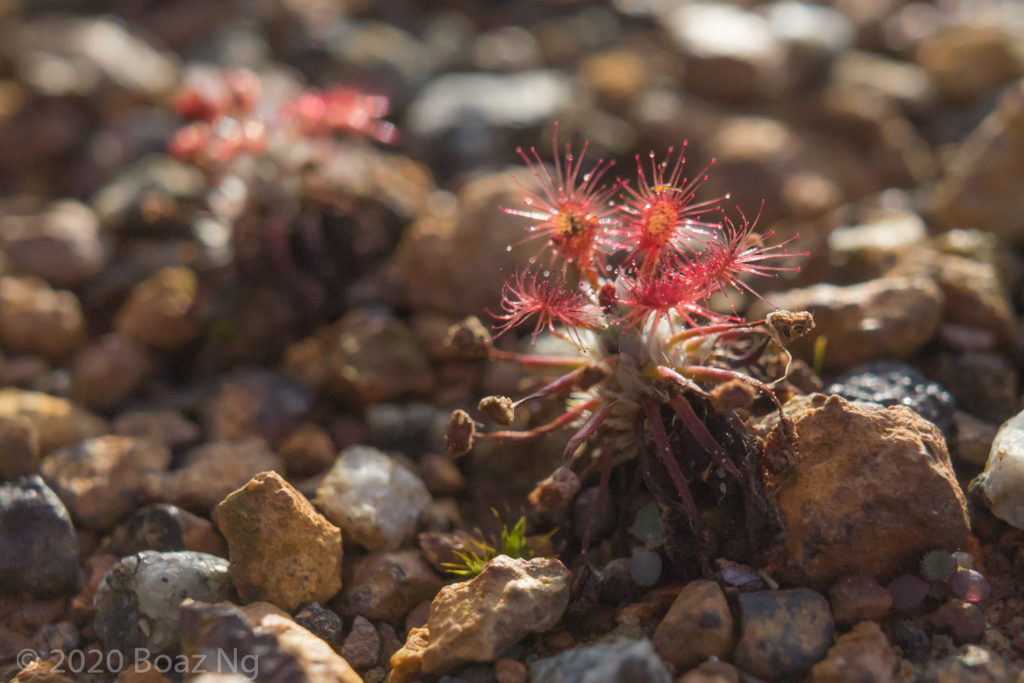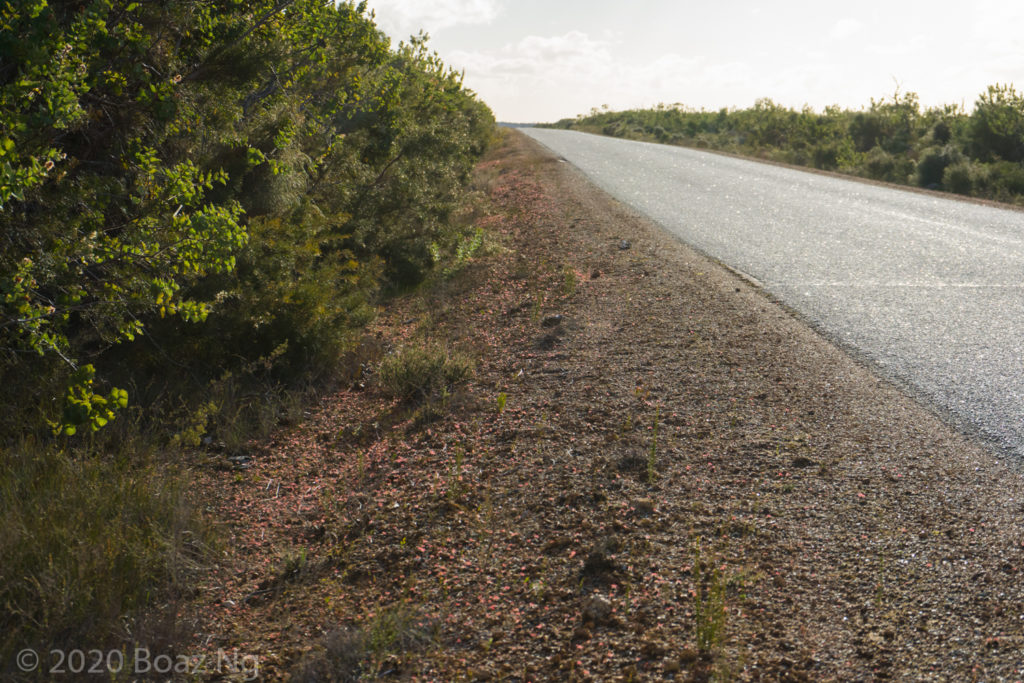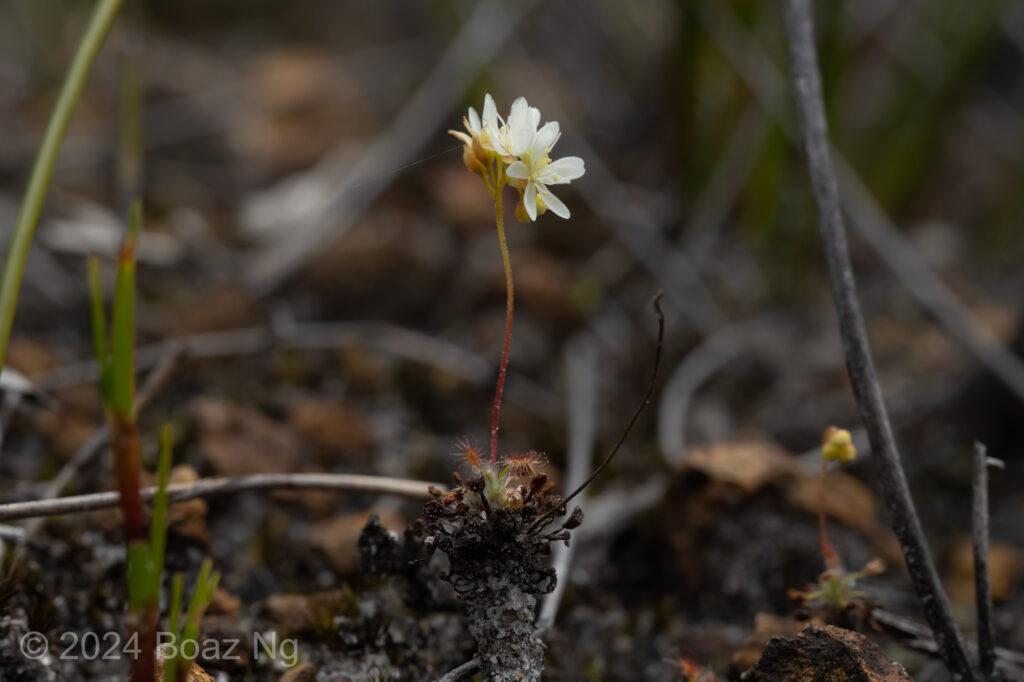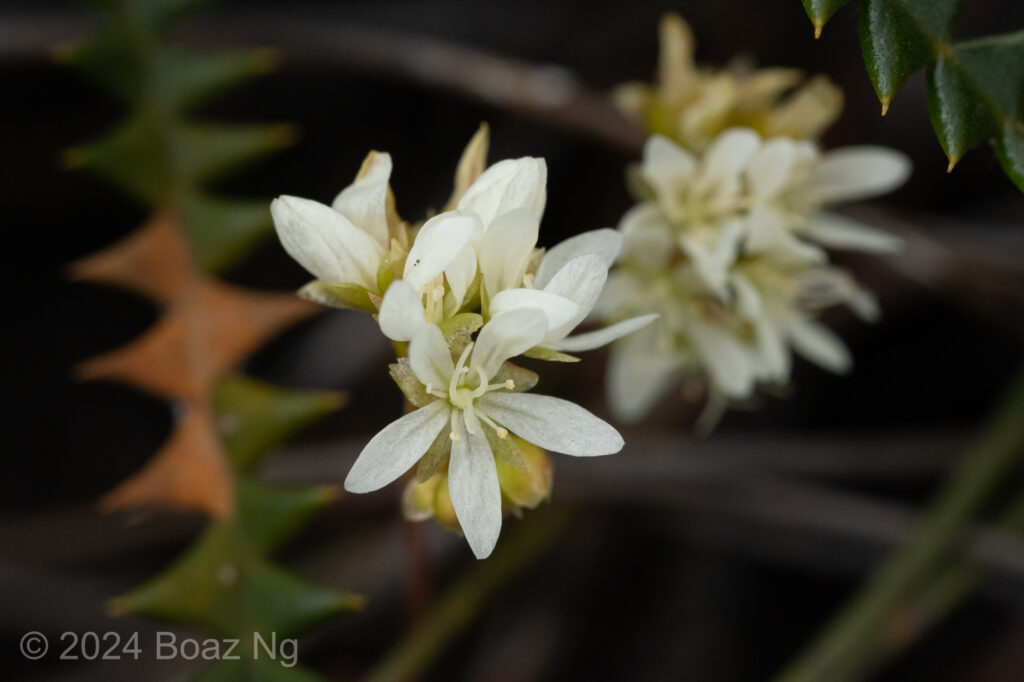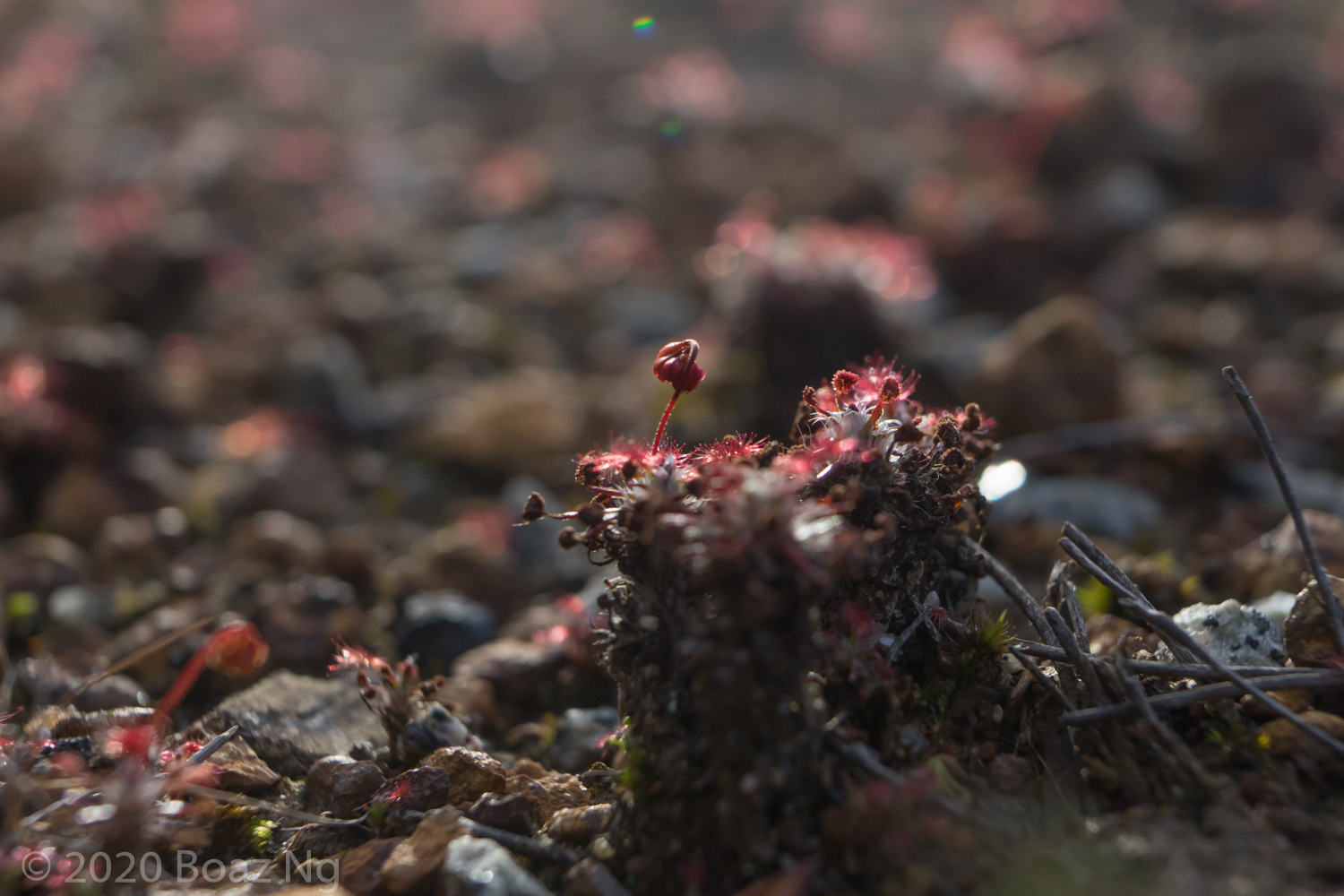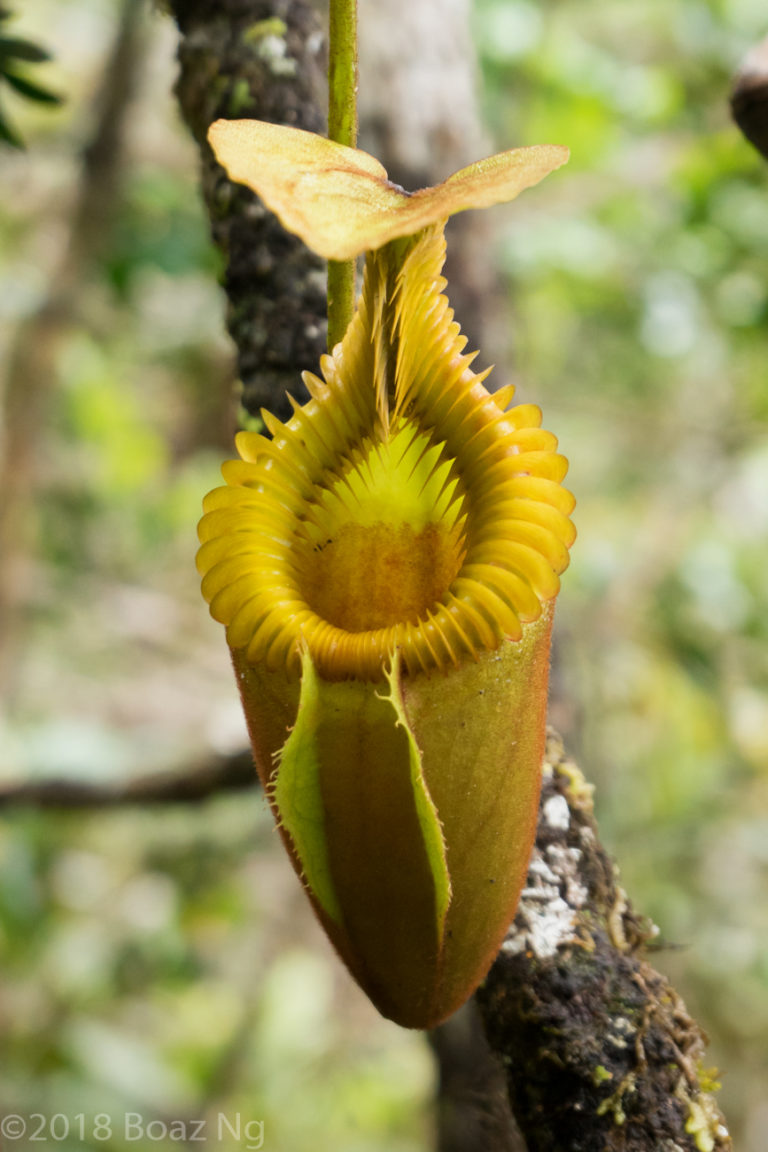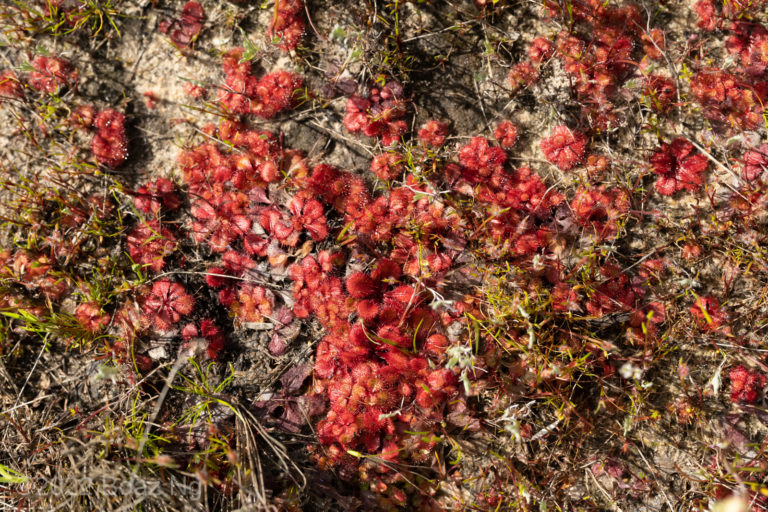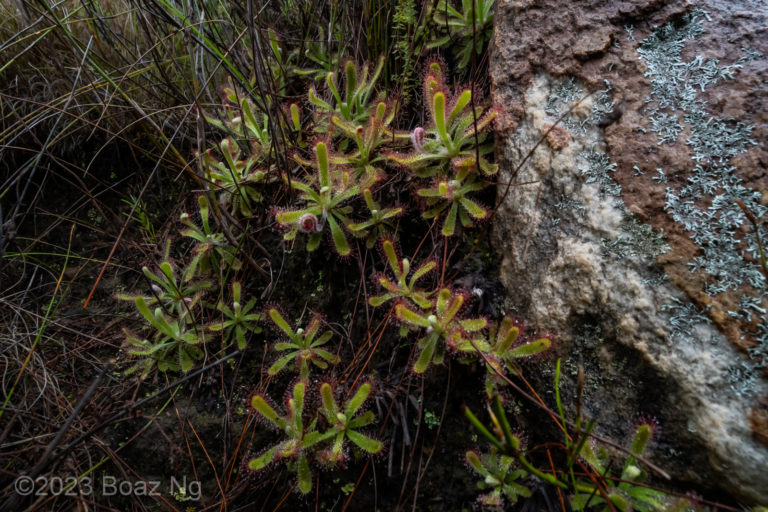Drosera verrucata is a pygmy sundew endemic to the south coast of WA around the Albany and Many Peaks region. The species is notable for forming a raised rosette of leaves at the top of a stem of old growth. This stem is reasonably short, reaching around 1-4 cm in length. The leaves have a long fleshy petiole, which is raised at an angle, gradually falling as the leaf matures. The petioles are covered with small translucent glands.
I observed the species growing in gravel on the side of a road in the Manypeaks region. The plants grew in such numbers that the entire section gave off a red sheen in the afternoon sun, which alerted me to their presence. I also may have seen them growing in a clay field in the Mt Lindesay National Park, but the plants there were not in bloom so I can not ascertain their identity with any certainty. In general, the species grows in clayey sand soils in heathland and shrubland.
Previously, this species was considered to be Drosera dichrosepala. Lowrie discovered a population of plants in the Wheatbelt that turned out to be the true D. dichrosepala, and so this south coast taxon was redescribed as Drosera verrucata. Most plants in cultivation labelled as D. dichrosepala are likely to actually be D. verrucata.
The species is similar to four other stem-forming pygmy species of southern Western Australia, which can be distinguished by their floral peduncles. Those of D. scorpioides and D. lasiantha have long white indumenta that give the appearance of wool. Drosera gibsonii has a scapes with a moderate covering of shot glands (and is also restricted to the slopes of the Stirling Range). Drosera dichrosepala has a very sparse covering of transluscent, red tipped glands. The floral scapes of Drosera verrucata are moderately covered with tiny glands.
